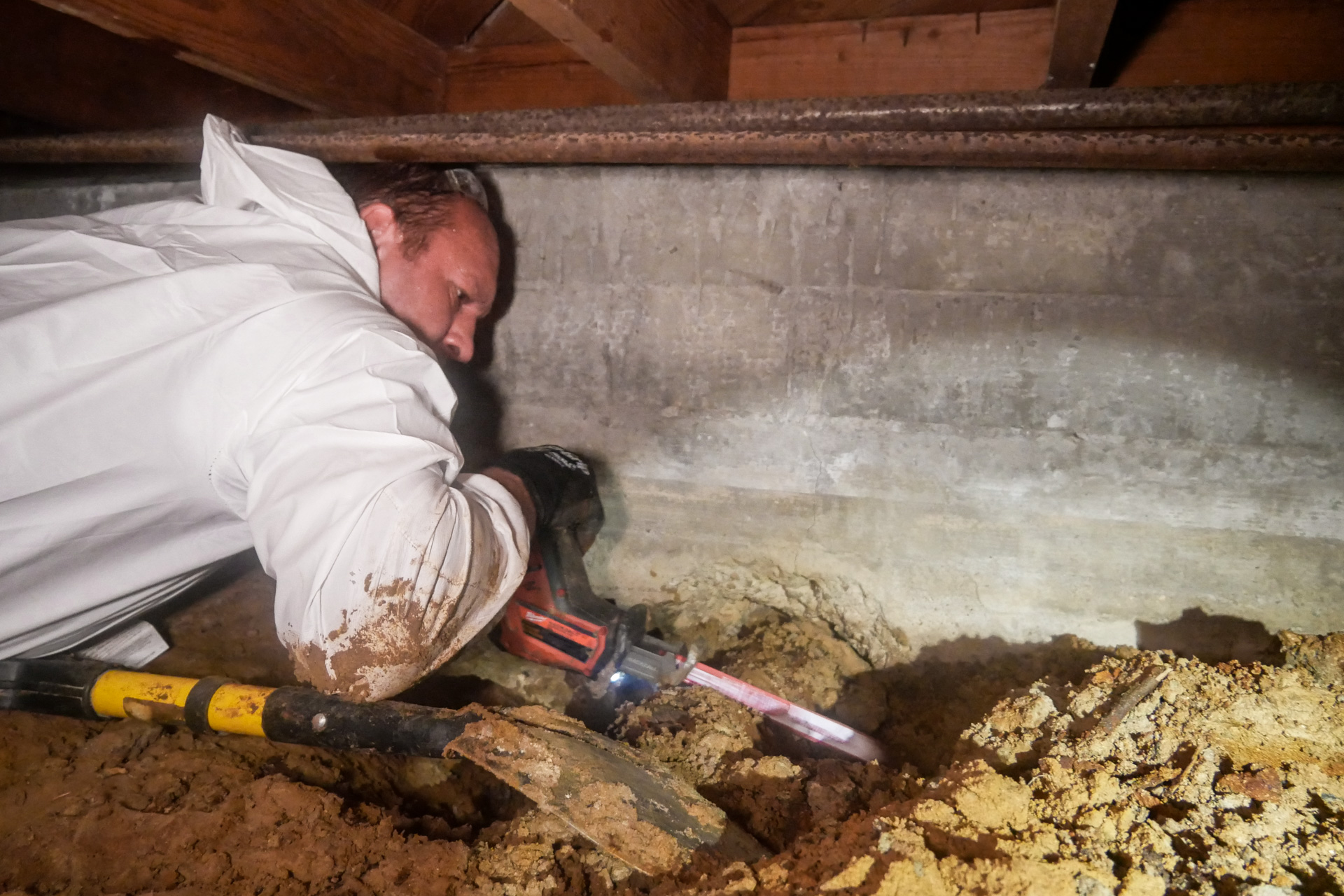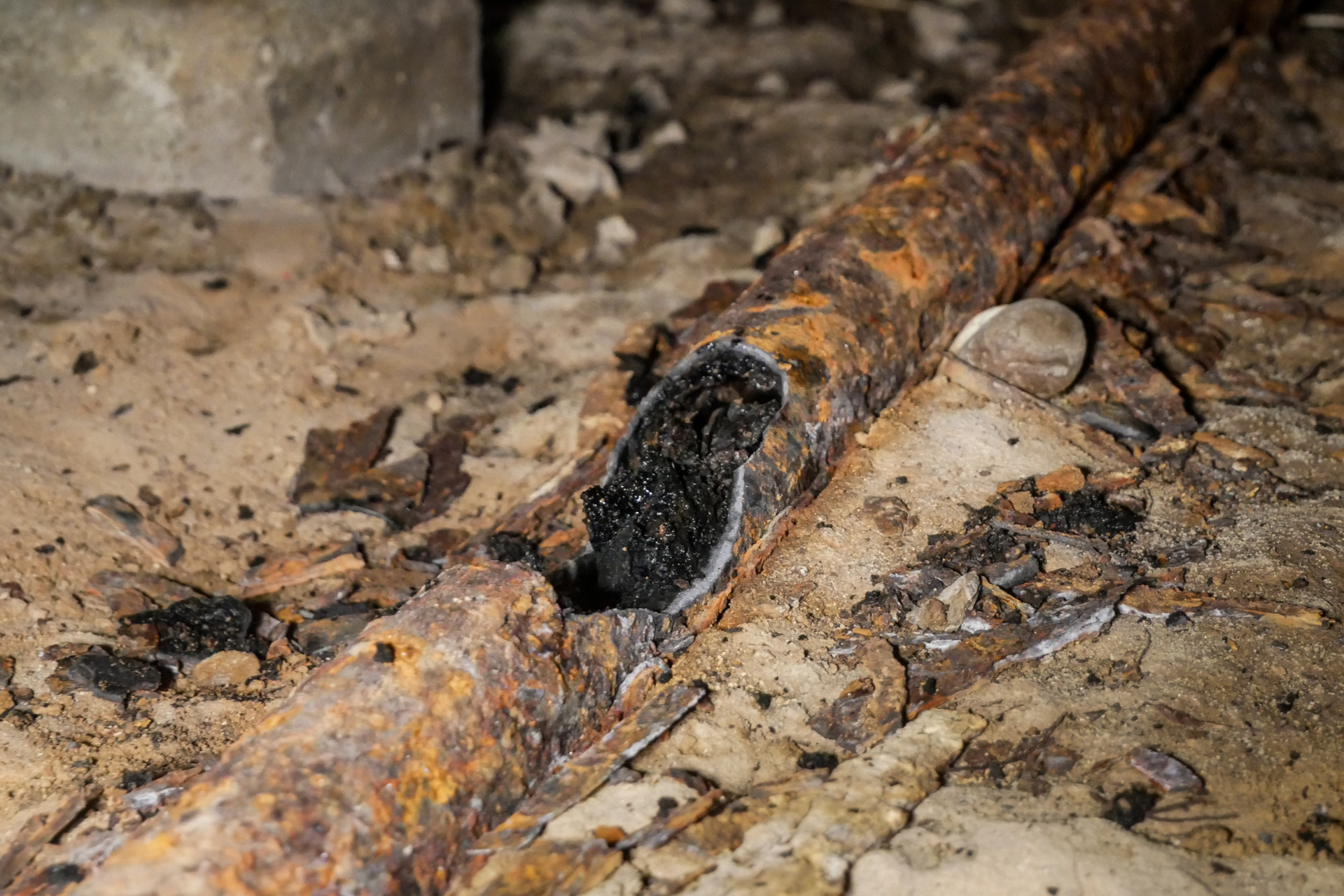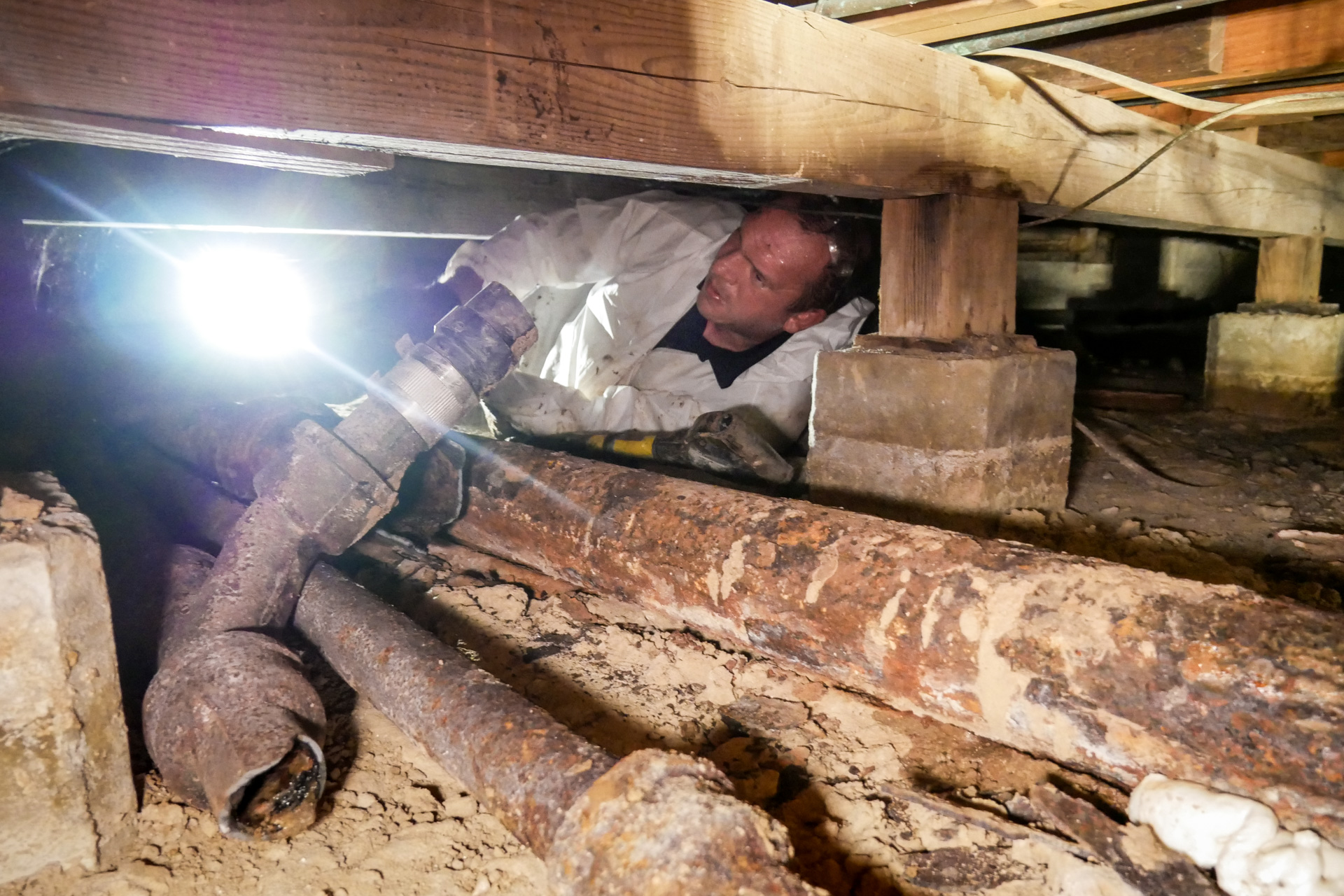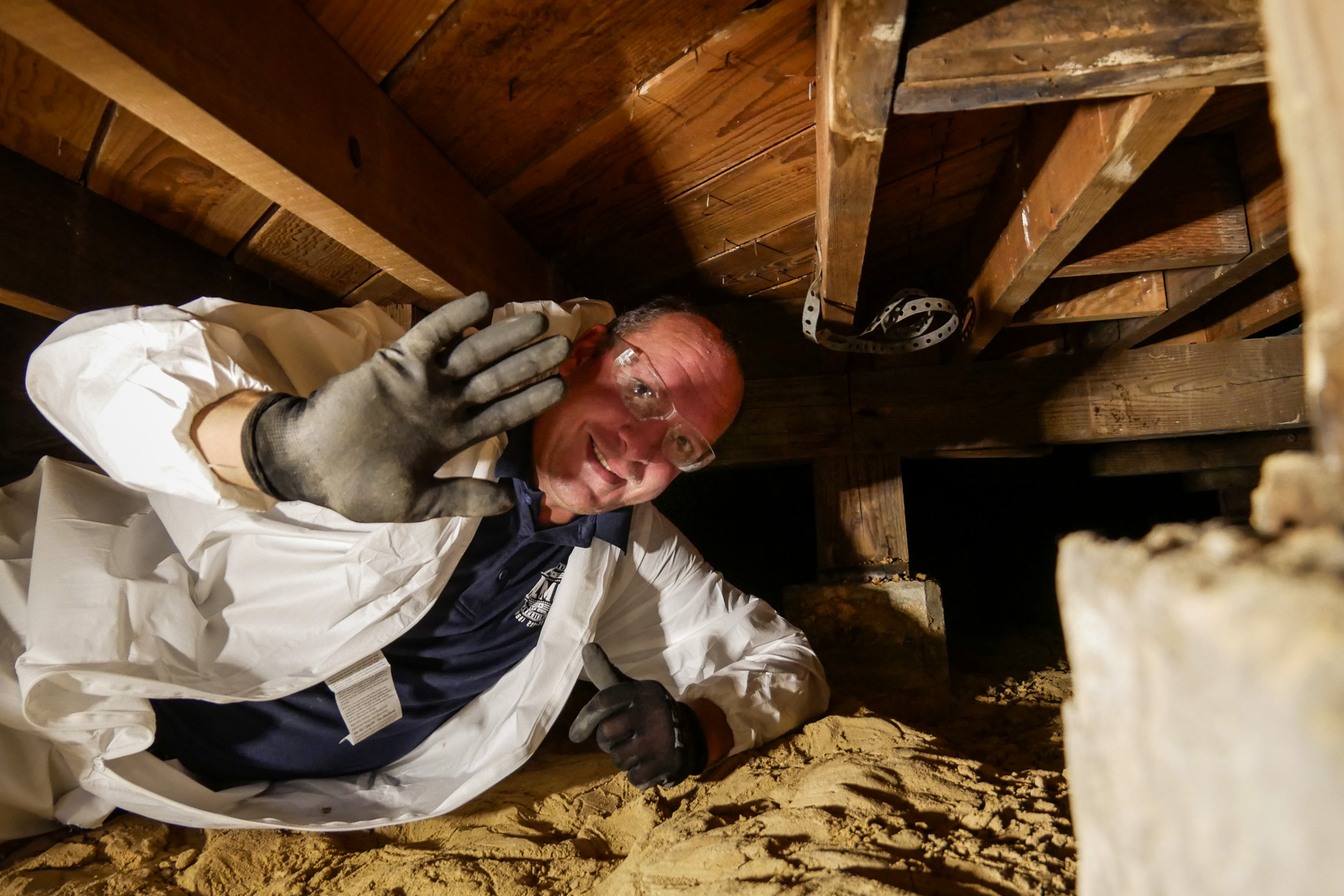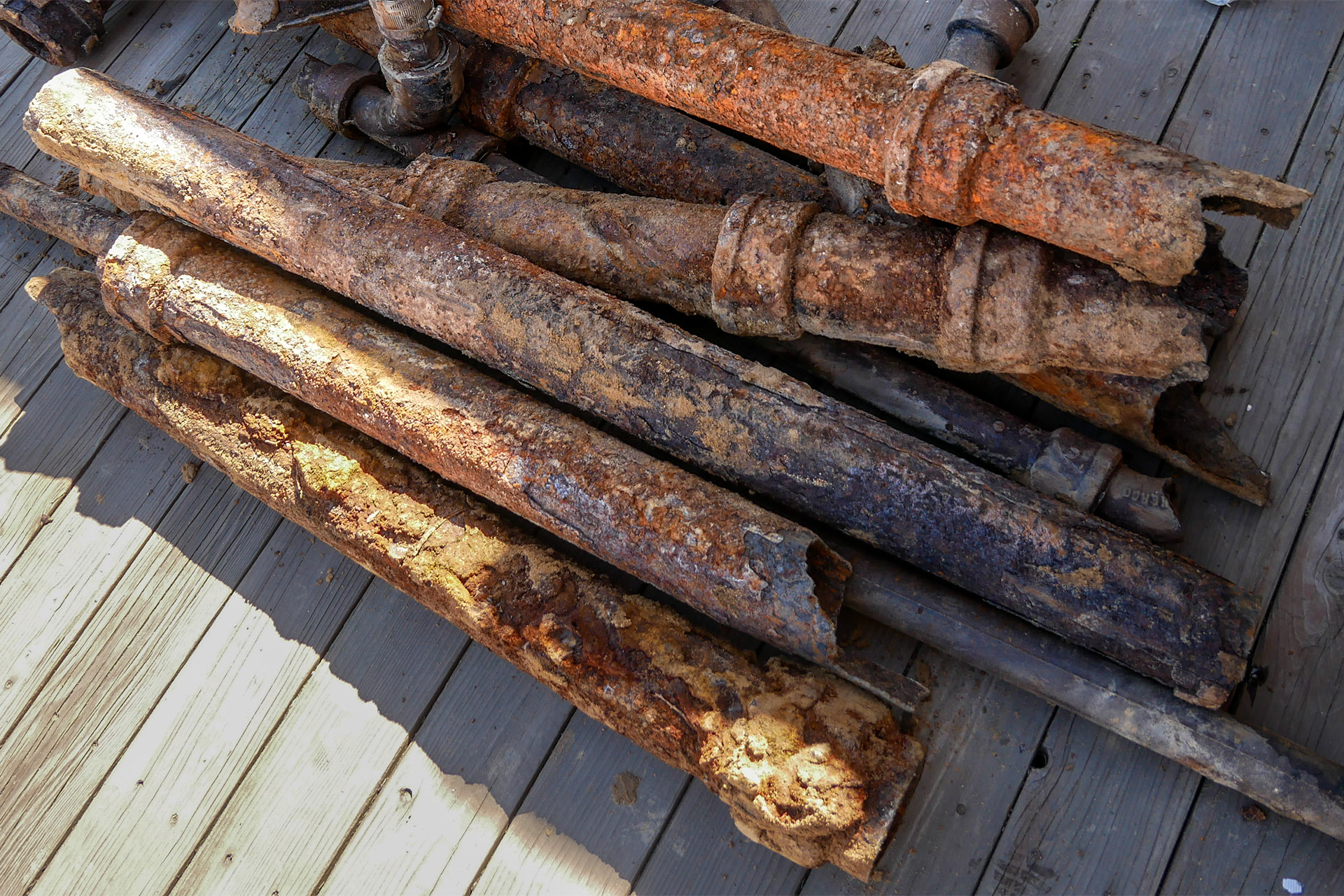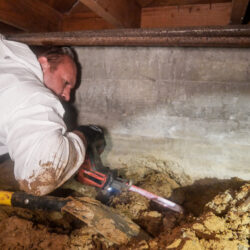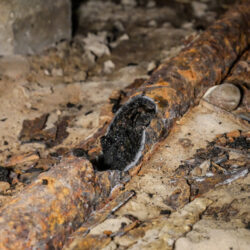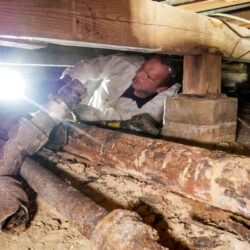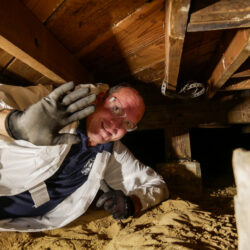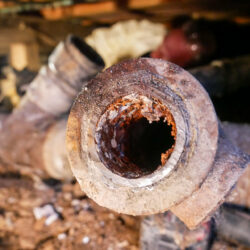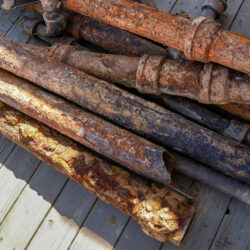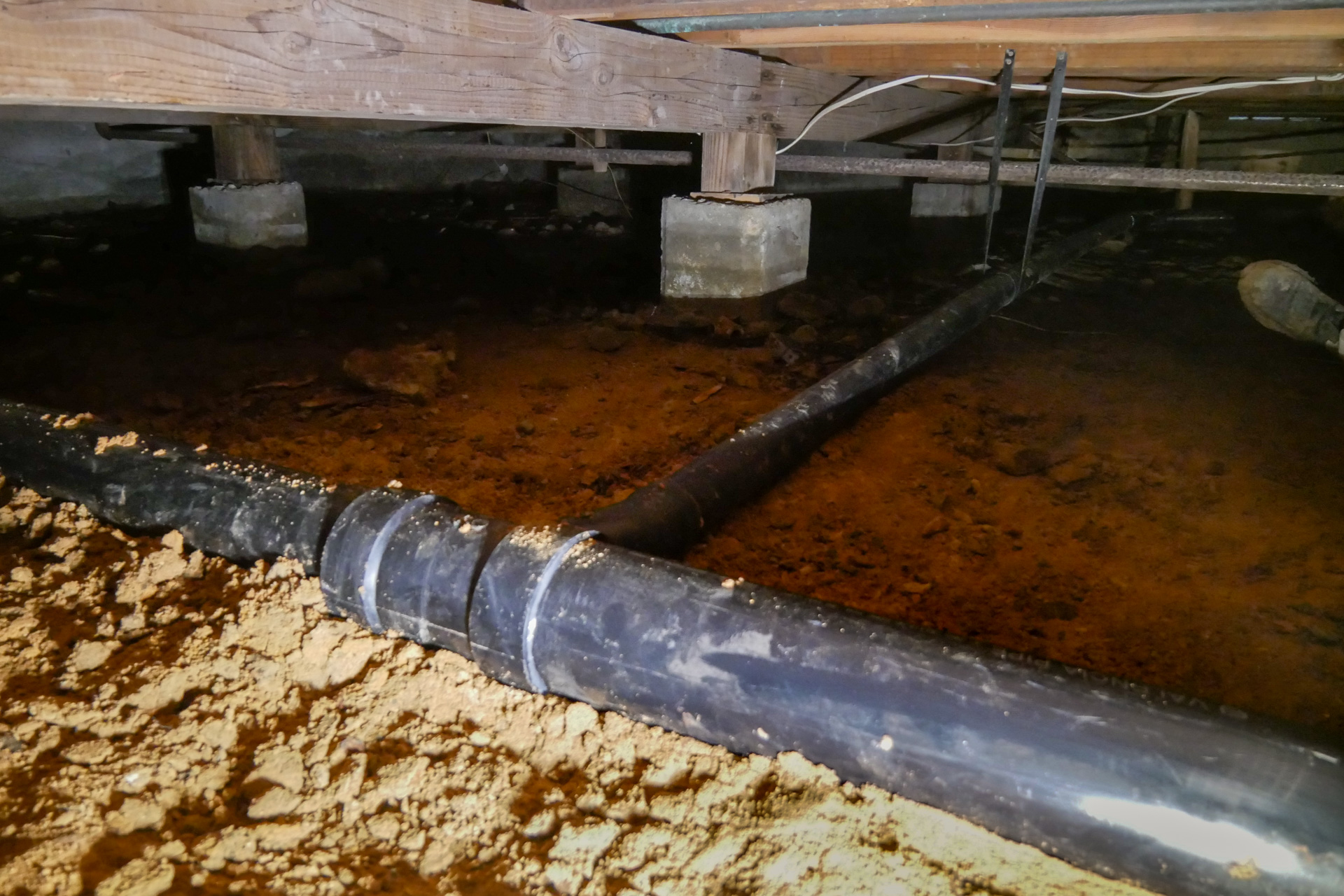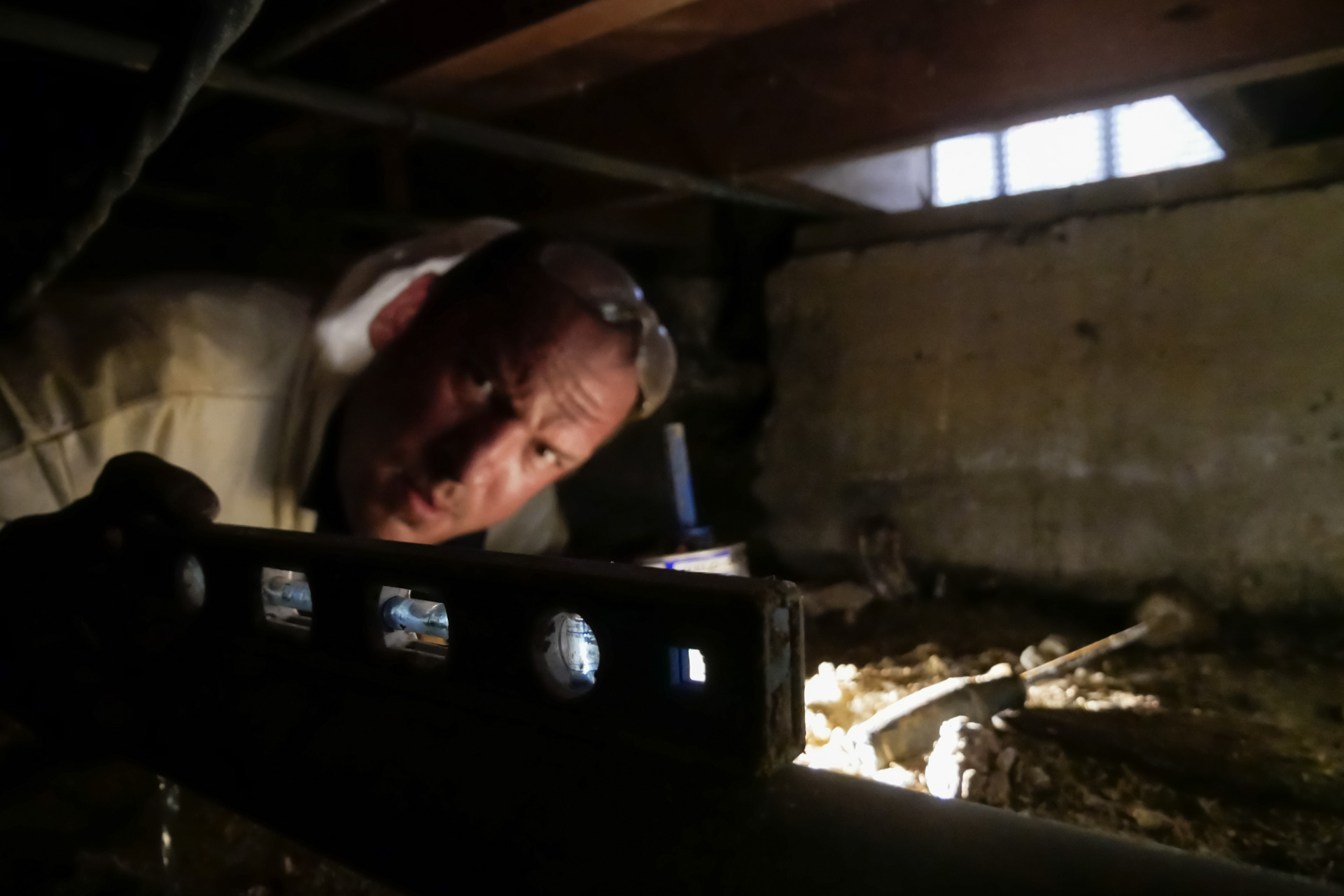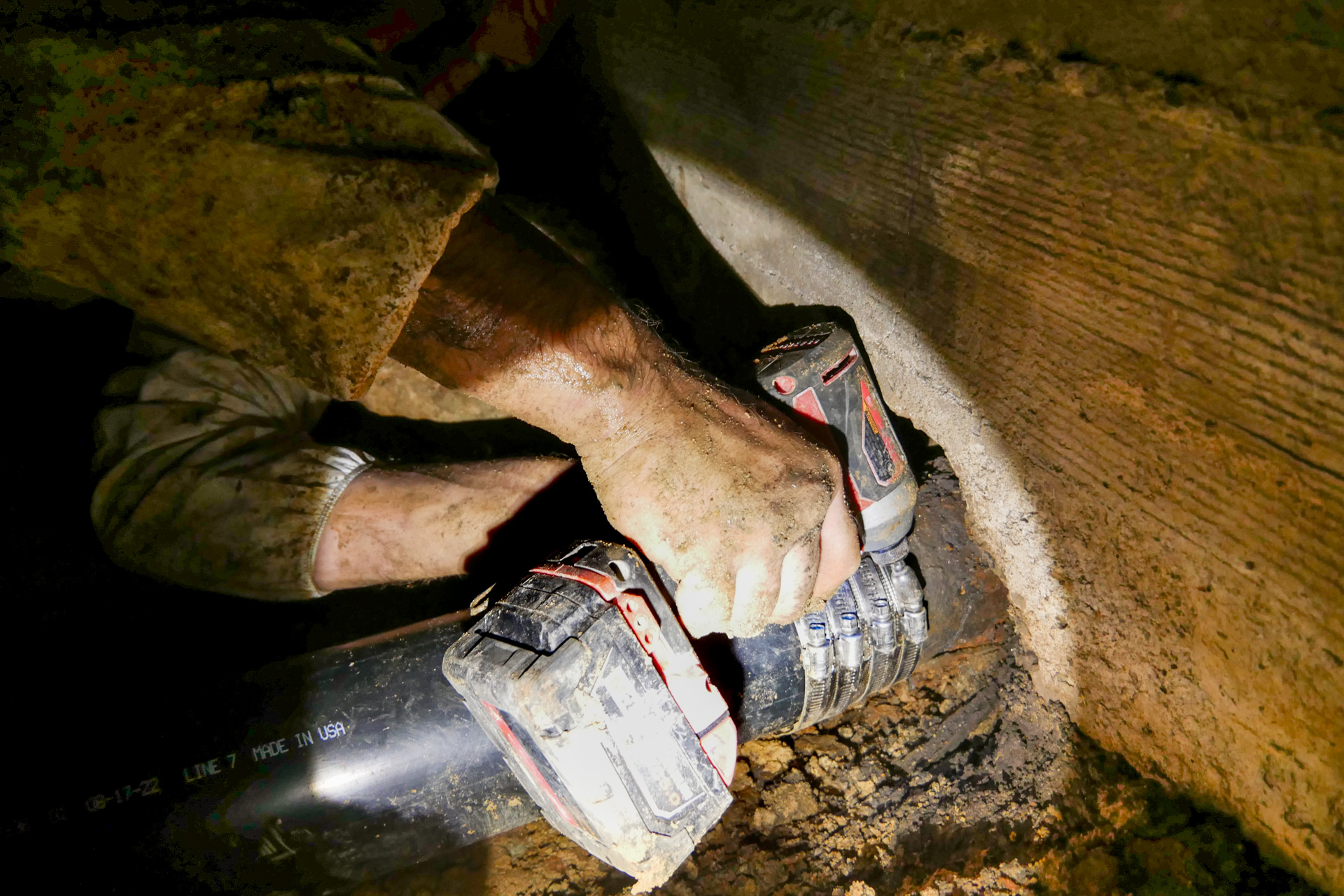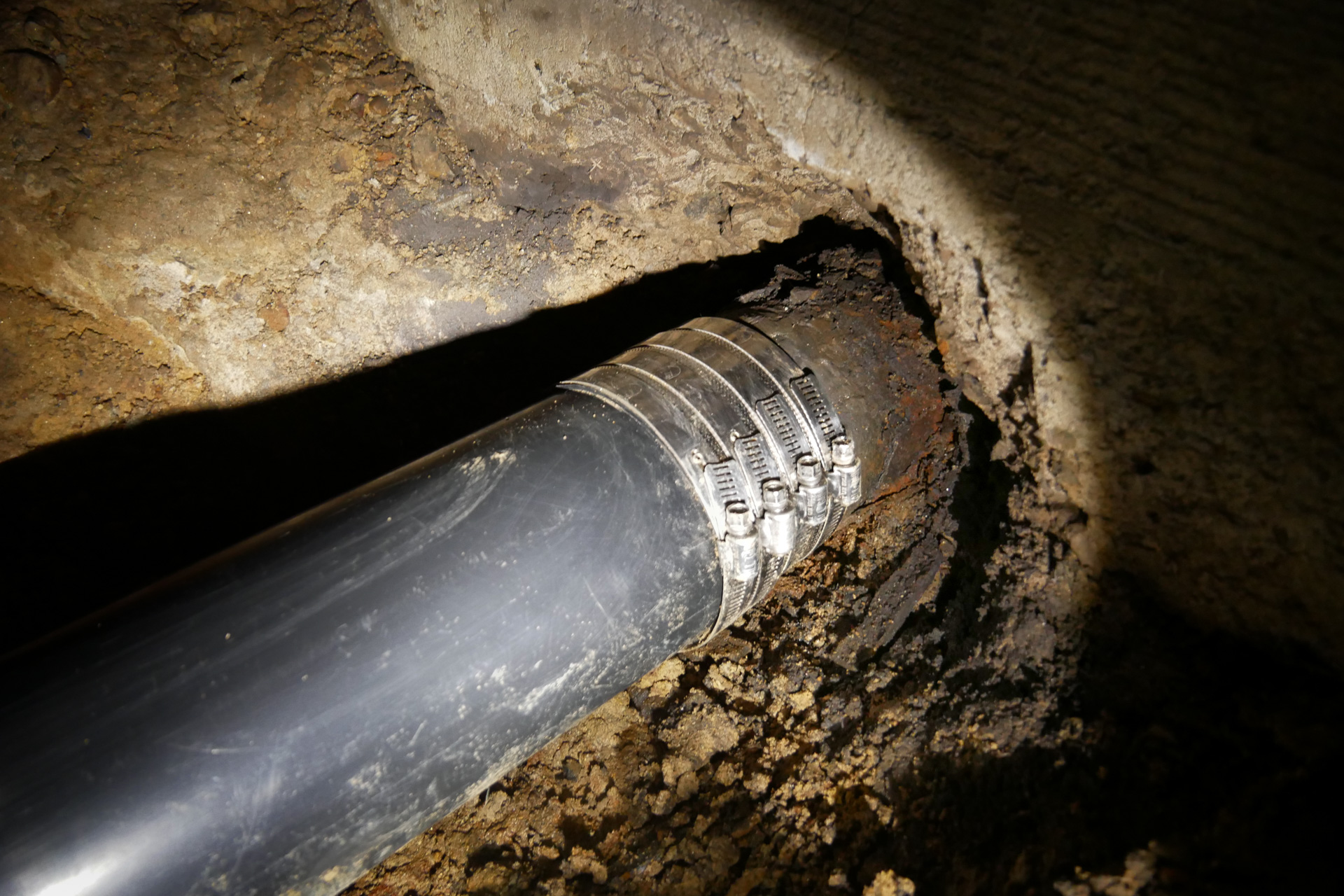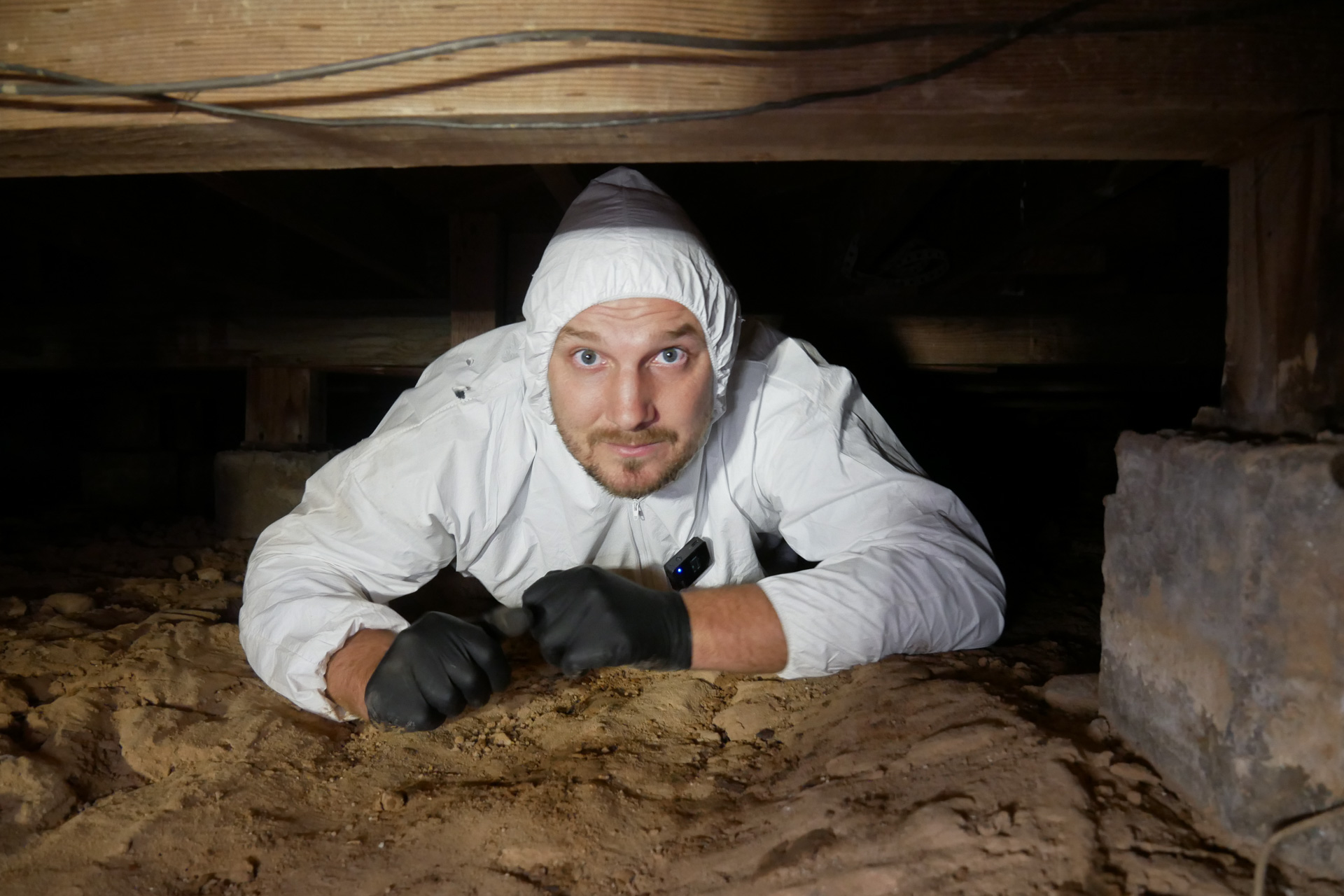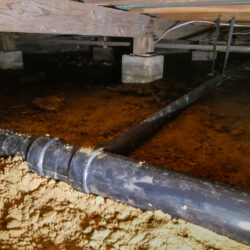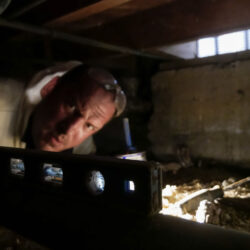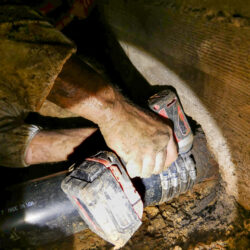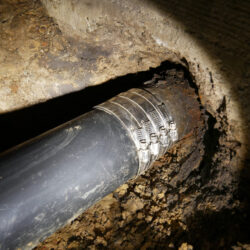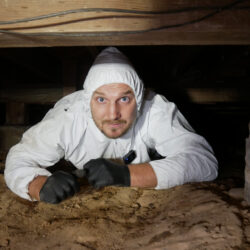Replacing Sewer Pipes in a Home with a Crawl Space: Real Life Experience from Almco Plumbing
Replacing sewer pipes in homes with a pier-and-beam foundation (crawl space) is a challenging engineering task that demands skilled professionals and the use of modern technologies. In the case study below, Almco Plumbing outlines the key stages of the project and how they affect the durability and reliability of the new system. The article also discusses the technologies, materials, and outcomes of replacing pipes under an old house.
Contents
Client’s Issue & Working Conditions
The client’s property, located in La Mesa, San Diego, California, needed repairs on a home with a pier-and-beam foundation. The old cast iron sewer pipes under the house were corroded, causing multiple leaks and flooding of the crawl space. While this foundation type allows for easier access to the crawl space, it also creates a tight work area—the crawl space height was only 18 inches. This forced the team to perform most of the work in very awkward positions, lying directly on the ground.
An additional challenge was the condition of the existing sewer system. The combination of challenging working conditions required thorough preparation and precise execution of the work.
Step-by-Step Description of the Sewer Repair Process
Before beginning the work, a comprehensive assessment of the existing sewer system was conducted. Special attention was given to maintaining cleanliness inside the house, using protective films on walls and floors to prevent contamination.
Stage 1: Removal of Old Pipes
After preparation, the team began removing the wall coverings in areas where the pipes were located. The removal of the old pipes involved cutting and dismantling them. The state of the sewer system allowed for manual disassembly, which highlighted the degree of wear and tear. Once the demolition was complete, the ground and surfaces in the crawl space were dried out to eliminate any remaining moisture and dampness caused by long-term leaks.
Stage 2: Installation of the New System
For the installation of the new sewer system, pipes made of modern, durable polyvinyl chloride (ABS) material were used, known for their resistance to wear and external pressure. The installation stages included:
- Measuring & Preparing the Pipes: Each section of pipe was carefully measured and cut to the necessary size to ensure precise installation.
- Connecting the Elements: The new pipes were joined using high-strength polyester sealant and rubber couplings, ensuring a tight seal and long-lasting system.
- Connecting to the Municipal Sewer System: The cast-iron branch of the city sewer line was cleaned to a pristine condition using an angle grinder and flap sanding disc. The connection was made using a rubber gasket and quick-release metal clamps.
Stage 3: Testing & Final Inspection
After the installation was complete, the company’s specialists conducted a series of tests on the new system. These tests included checking for airtightness, flow capacity, and the absence of leaks. Only after successfully passing all tests was the system handed over to the homeowner.
Conclusion & Insights
Working in the confined space under the house requires a high level of expertise and the use of specialized solutions. The use of modern materials, such as PVC and ABS pipes and polyester sealants (ABS or PVC glue), significantly improves the quality and longevity of sewer systems. Thorough preparation and control of each work phase—from the removal of old pipes to connecting to the municipal sewer system—ensure the successful completion of such projects.
We also strongly recommend that owners of older properties regularly check the condition of their sewer systems before visible problems occur. Replacing or repairing pipes before they leak and flood the crawl space is far more cost-effective than dealing with the aftermath of a flood, drying out the crawl space, and then replacing the entire sewer system.
